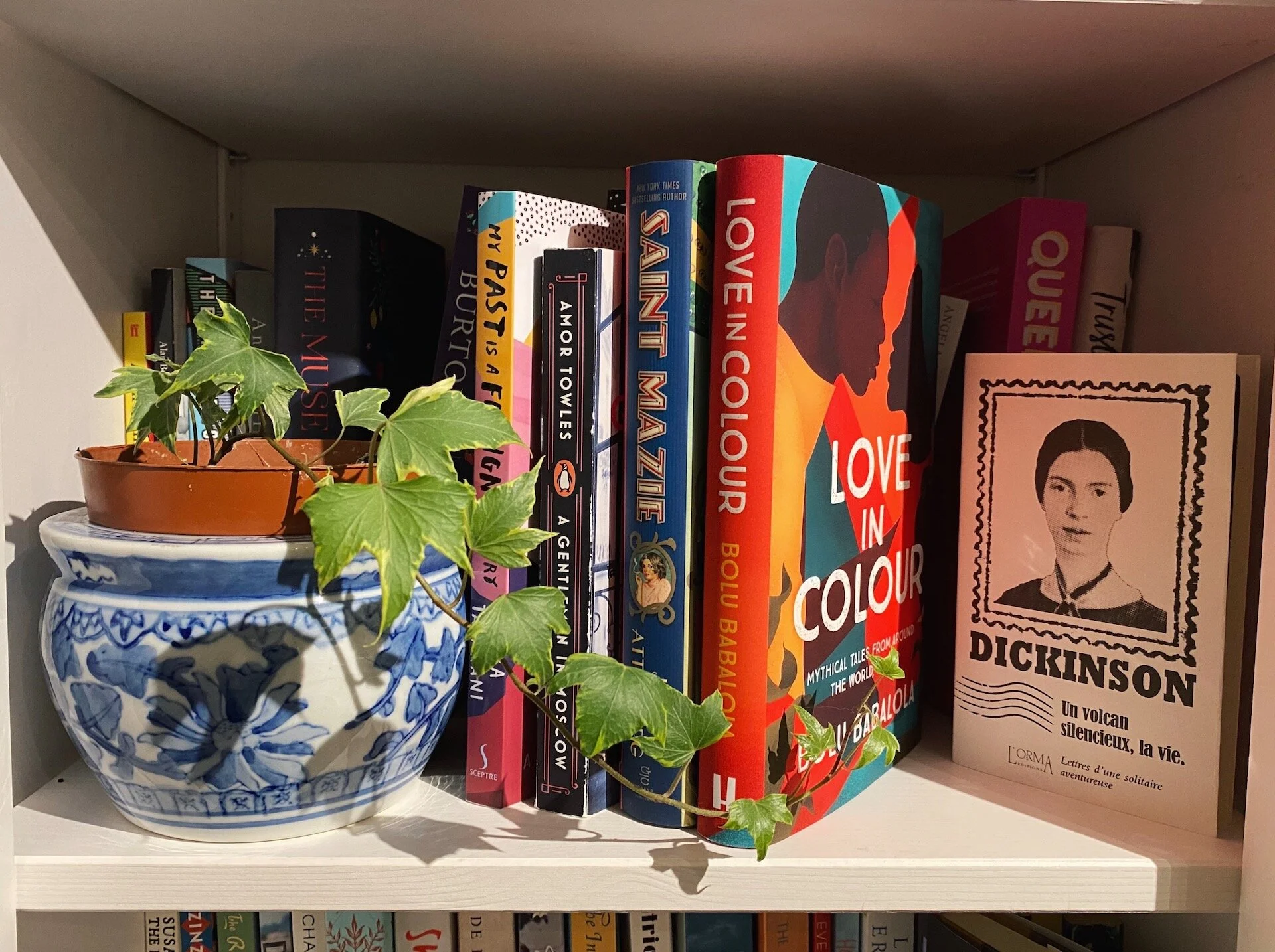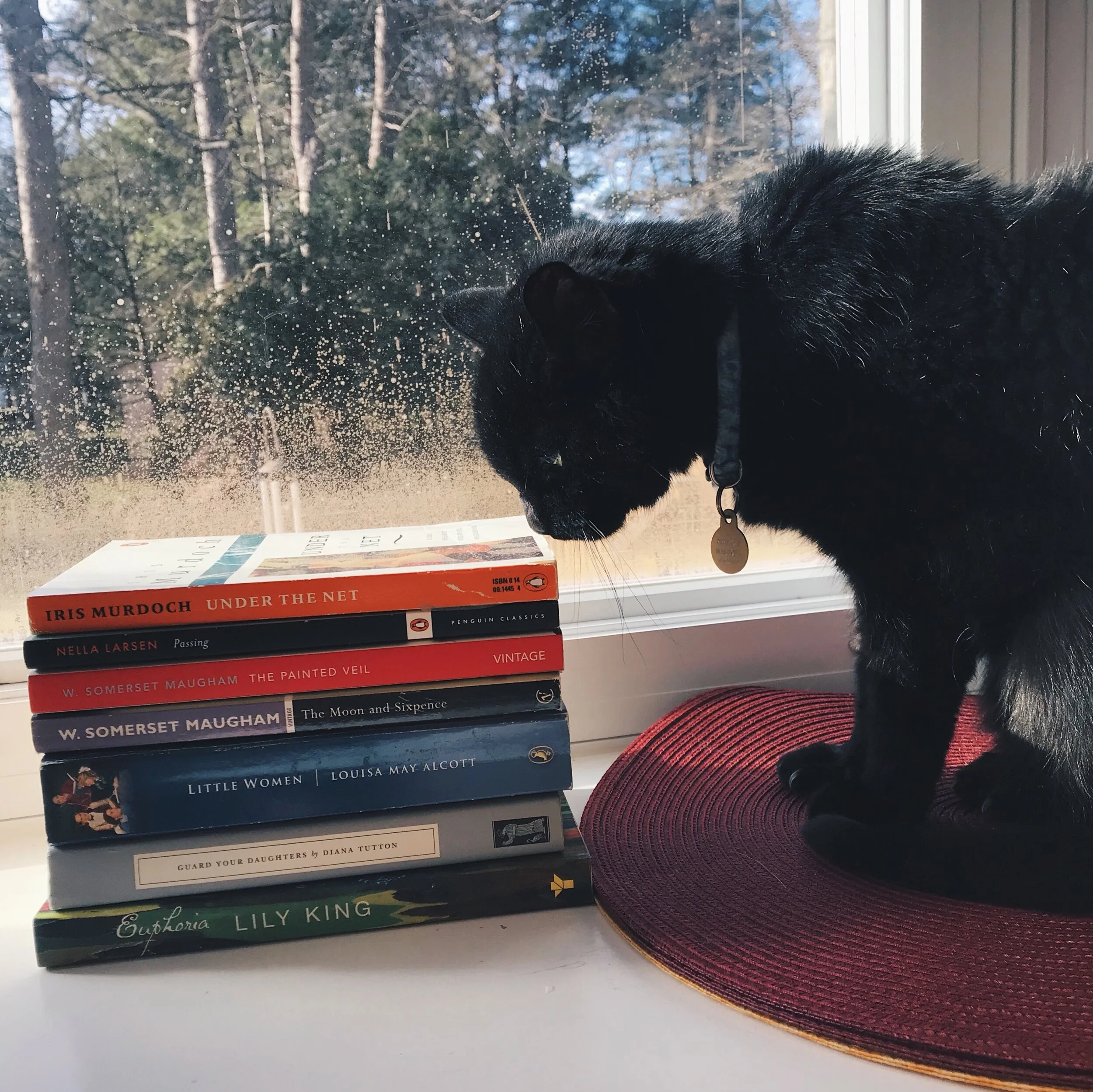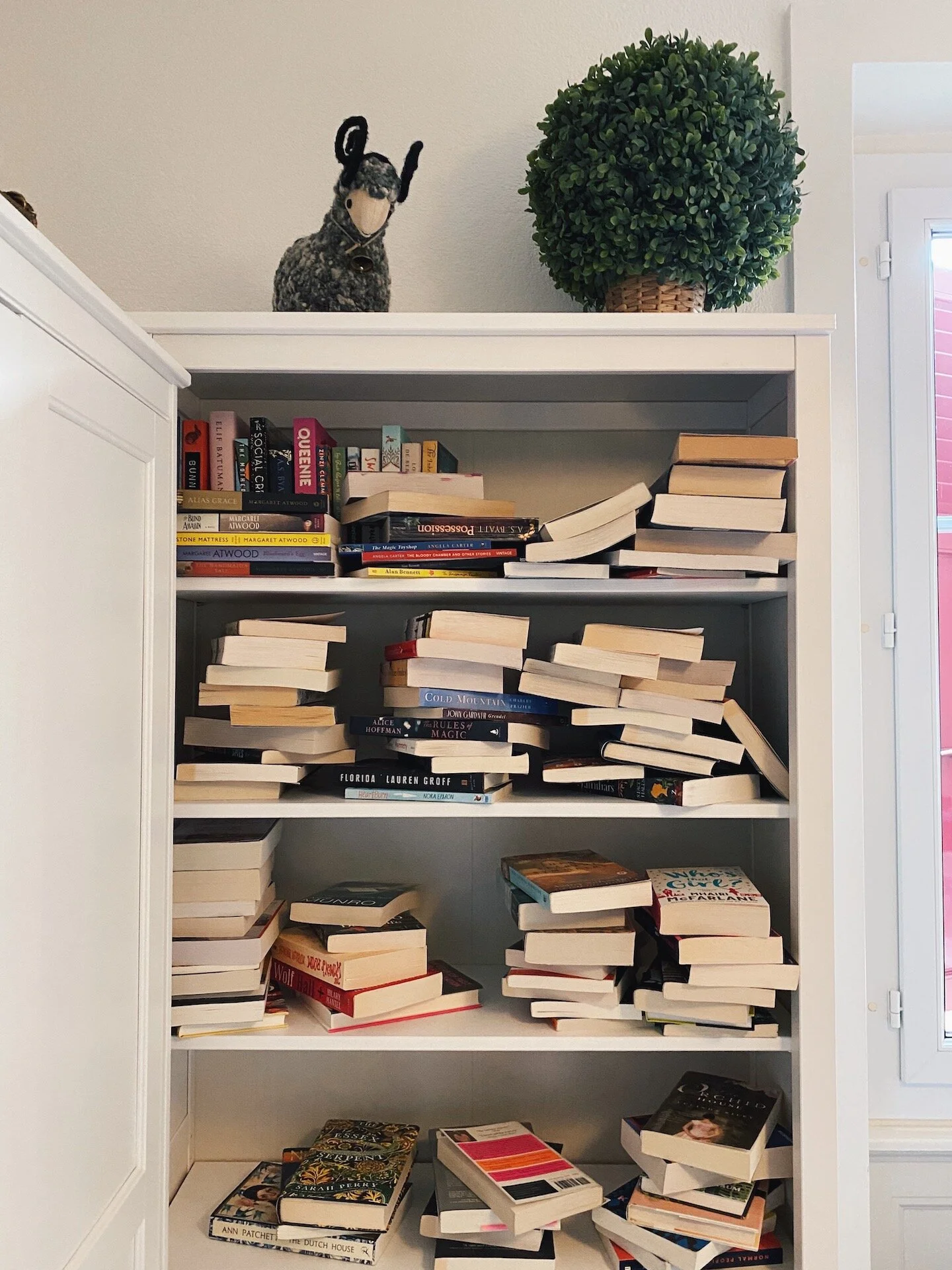On Literary Pilgrimage, Vol. 1 – The Goldfinch(es): Real & Imagined
That we here at the Attic on Eighth love literature, fiction, and all that they have to give to the world is no big secret. We find inspiration in it. We breathe it in. We turn to it to determine how to dress. And sometimes, we allow it to inspire the way we inhabit the world, the places we travel to and visit. In this new series, the Attic writers go on literary pilgrimage to visit sites related to their favorite pieces of fiction, and in this first edition, Kiely Schuck visits Carel Fabritius’s The Goldfinch.
Carel Fabritius’s “The Goldfinch” (1654), photographed by Kiely Schuck. All photos courtesy of the author.
“—if a painting really works down in your heart and changes the way you see, and think, and feel, you don’t think, ‘oh, I love this picture because it’s universal.’ ‘I love this painting because it speaks to all mankind.’ That’s not the reason anyone loves a piece of art. It’s a secret whisper from an alleyway. Psst, you. Hey kid. Yes, you. ”
Two weeks ago I went to Amsterdam for my fall semester break. I went for three days, mainly for the Van Gogh Museum and the Anne Frank House, both of which I had wanted to visit for years. As soon as I learned that The Hague, another major important city in the Netherlands, was only an hour away by train, I planned on spending one of my three days there. The one and only reason why I wanted to visit was to see Carel Fabritius’s The Goldfinch painting of 1654 at the Mauritshuis museum.
I got off the train, stumbled through the built-up city center (which felt so different than the canals and fresh air in Amsterdam), got a little bit lost, and then eventually found the beautiful Mauritshuis – originally the home of Count Maurice of Nassau, it now houses the Dutch Royal Cabinet of Paintings. The museum is similar to other house museums that I’ve been to, with beautiful décor and wallpaper, seasonally-appropriate flower arrangements, and at least the illusion that you are in the public areas of an active upper-class home. I enjoyed their small but exquisite collection of Dutch Golden Age paintings (including Vermeer’s Girl with a Pearl Earring – yes, that one), but when I finally faced Fabritius’s tiny little goldfinch on the wall, I breathed a big sigh of relief.
The author’s copy of Donna Tartt’s novel.
Today, this painting is most famous for being the inspiration, cover image, and driving force of Donna Tartt’s Pulitzer-Prize-winning 2014 novel, The Goldfinch. A massive epic novel, The Goldfinch tells the story of Theo Decker, a boy who visits a thinly-veiled Metropolitan Museum of Art with his mom to see an exhibit of Dutch painting. When looking at The Goldfinch, he sees and becomes obsessed with a young red-headed girl his age, named Pippa, accompanied by her grandfather. Theo’s mother goes into another room of the exhibit, and suddenly a bomb shakes the entire museum: a terrorist attack has targeted the Met. In the confusion after the attack, the red-headed girl’s dying grandfather tells Theo to take the painting of the goldfinch. Theo takes the painting, escapes, and heads home to wait for his mom to reconvene with him. She never does.
As Theo grows older, he realizes how important The Goldfinch painting is, and carries it with him when he goes to live with his deadbeat dad in Las Vegas, and then back again to New York to work at for an antique shop as a young adult. Along the way, the painting takes on the symbolism of Theo’s mother, whom he dearly misses, and also as well as becomes ing a beautiful object that Theo calls his own, even if it doesn’t actually belong to him: it belongs to the world, or at the very least, the Maurithuis museum. In the book, Theo does a lot of drugs, falls in love with his best friend Boris, kidnaps his dad’s dog Popchyk, and becomes a fraudulent antique furniture dealer, but mostly thinks a lot about beauty and its purpose in this world: something I’ve thought about often recently, too.
“Caring too much for objects can destroy you. Only—if you care for a thing enough, it takes on a life of its own, doesn’t it? And isn’t the whole point of things—beautiful things—that they connect you to some larger beauty?”
The Mauritshuis, photographed by the author.
Back in the Mauritshuis, I stood in a room on the second floor and stared at the tiny Goldfinch hanging on the wall. I thought, and still think, that it is a cute and charming and yet slightly sad painting, depicting a goldfinch tethered by his ankle to his feeder so that he cannot fly away. In person, you can clearly see the bright yellow slash of paint on the bird’s wing, giving it its name, and I stared at that for a while, along with the somehow quite perfect cream-colored background and the small little face of the bird looking out into the world, seeming to almost be looking at me. More than that, though, I noticed the security guard standing just off to the right of the painting, which I would like to think is so that the painting can’t be stolen like it was in the book that made the painting famous. And that was when I started thinking about Theo.
As an art-historian-in-training, I sort of feel ashamed to think that most of my time spent looking at this famous Dutch Golden Age painting was instead spent thinking about a book. I understand that the book is fictional, that these characters are not real and originated in the mind of one ultra-mysterious Donna Tartt, but then again, I’ve always had a hard time differentiating books and historical figures from my own reality. I stood there and looked at the goldfinch and thought about Theo, and Boris, and Pippa, and how there is an alternate universe where this painting isn’t hanging in a museum in The Hague, but is instead wrapped in newspaper and hidden underneath a bed in Las Vegas. I thought about what this painting meant to this fictional character – as a personification of his mother, but also his love for Boris, but also a greater symbol of love and beauty in general.
While I stood there, I saw and heard an older man and a younger teen speaking German nearby. I could pick out the man’s words about “Donna Tartt” and “American” and I tried to restrain a chuckle. The two of them looked at me and smiled; I did too. It made me feel so joyful to see firsthand how this book brings people to this museum and to appreciate this painting, beyond my own crazy need to have art echo reality, or vice versa. I texted my friend and joked, “This museum is selling copies of the book, as if the book is actually about the painting and not drugs and homoeroticism and sweeping metaphors.” She responded, “What, as if art isn’t about that anyway?” And yes, okay, that sums it up quite nicely.
“You can look at a picture for a week and never think of it again. You can also look at a picture for a second and think of it all your life.”
And two weeks later, I’m still thinking about The Goldfinch on that green wall, the streak of yellow paint on the bird’s wing, the imagined world where there is a blank space where the painting should be on that same green wall. Books and art have always been the driving forces of my life, my passions, and my goals, constantly jockeying each other out of first place due to whatever I’m studying or reading at any given time. I’m not sure, however, that those two loves have ever collided as forcefully as they did that morning at the Mauritshuis. I don’t even like Dutch painting! Why in the world did I love this painting so much? It’s because of Donna Tartt, obviously, and this darn book. Beauty is a hard thing to discern, in my opinion, but so easy to find once you start looking for it. I find it in the modernist paintings of Gustav Klimt, Michelangelo’s David and Pietà, even the paintings of Vermeer and Van Gogh on this very same trip to the Netherlands. If Donna Tartt had not written this book, I do not think I would have seen so much beauty in Fabritius’s little goldfinch. Or, who knows, maybe I would have anyway.
“For if disaster and oblivion have followed this painting down through time—so too has love.”
I’ve found a lot of love in my study of the history of art, and the many books and their characters that have made permanent spaces in my soul; I also found a lot of love during my time visiting The Goldfinch. I’m glad that, much like Theo Decker, my own love can add to the history of this charming little painting and the larger-than-life novel that bears its name.
Kiely Schuck is pursuing a master’s degree in Italian Renaissance art and holds a bachelor’s degree in art history. She is a voracious reader, an art museum enthusiast, and constantly on the lookout for gluten-free pastries. She currently lives in Florence, Italy.













Reading Naoise Dolan’s Exciting Times and Katie Kitamura’s Intimacies, Rachel Tay explores the unease of moving away from one’s own country and language.